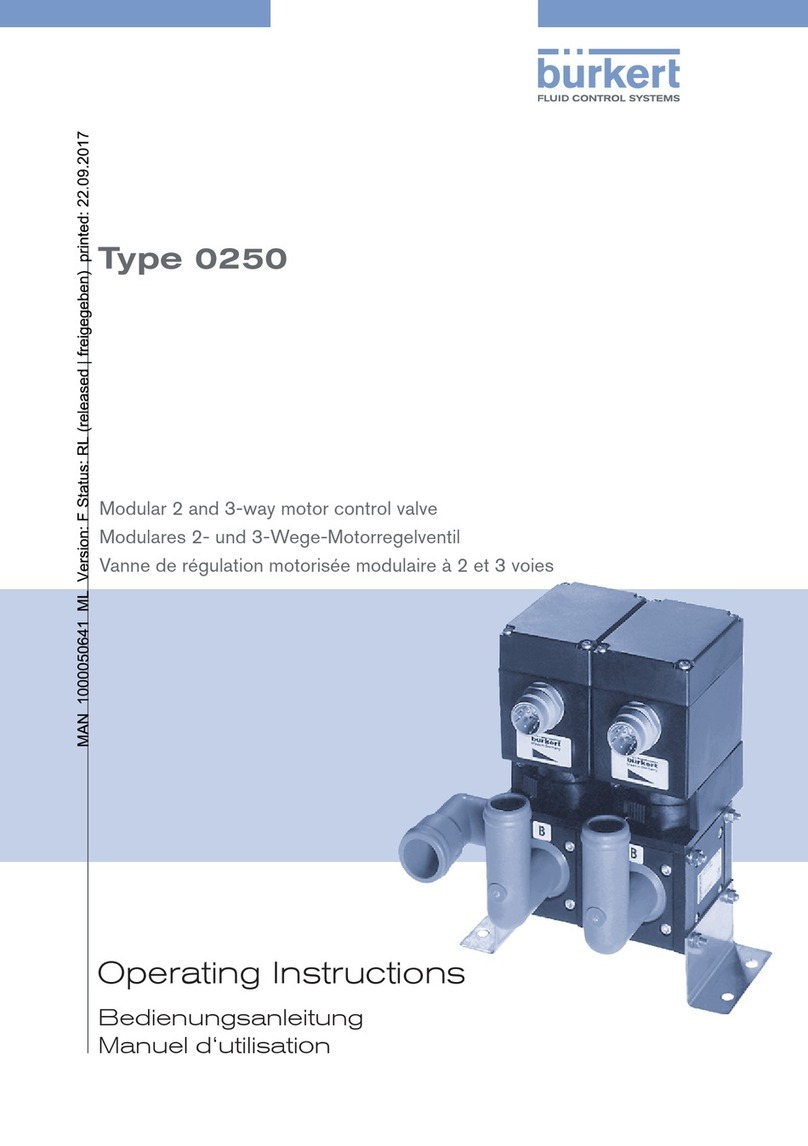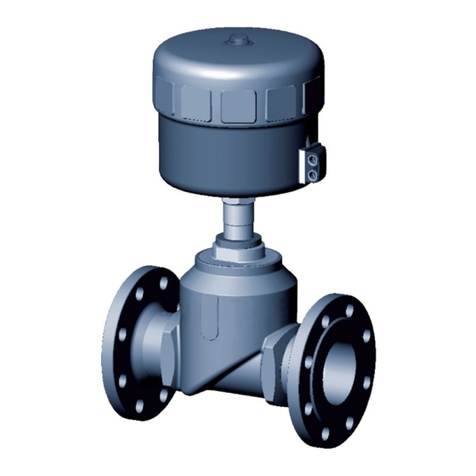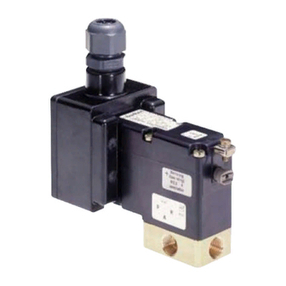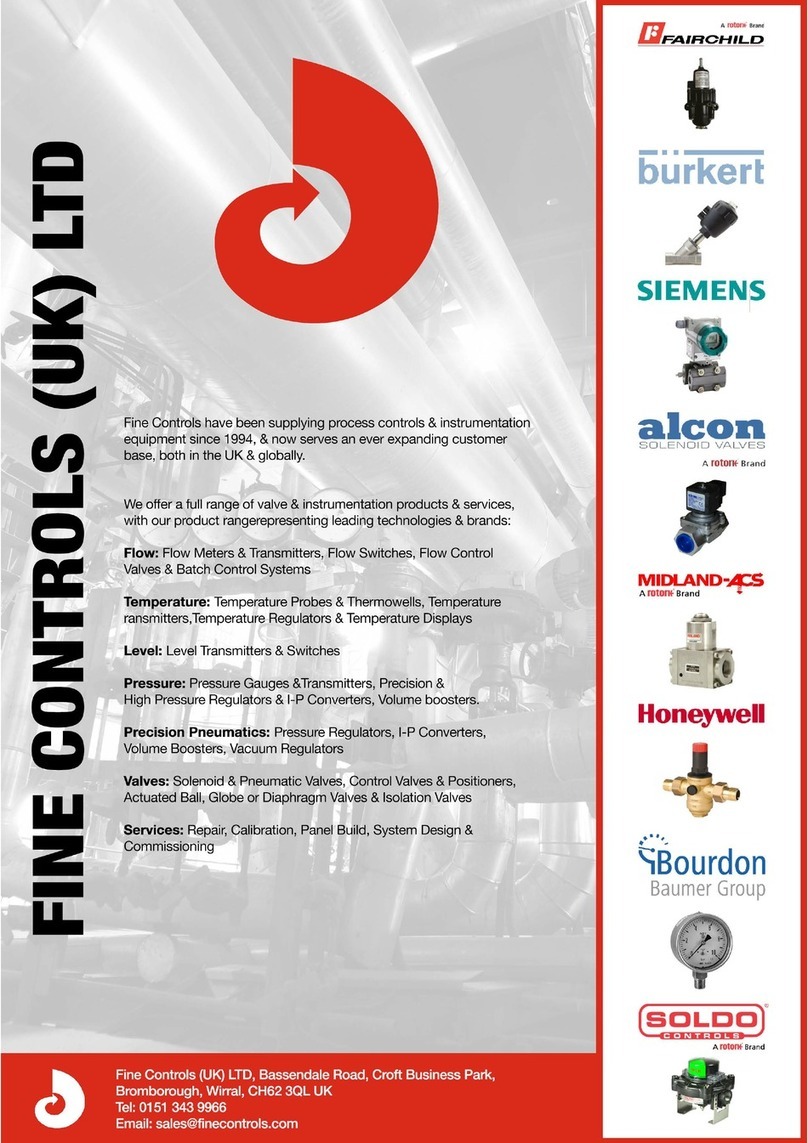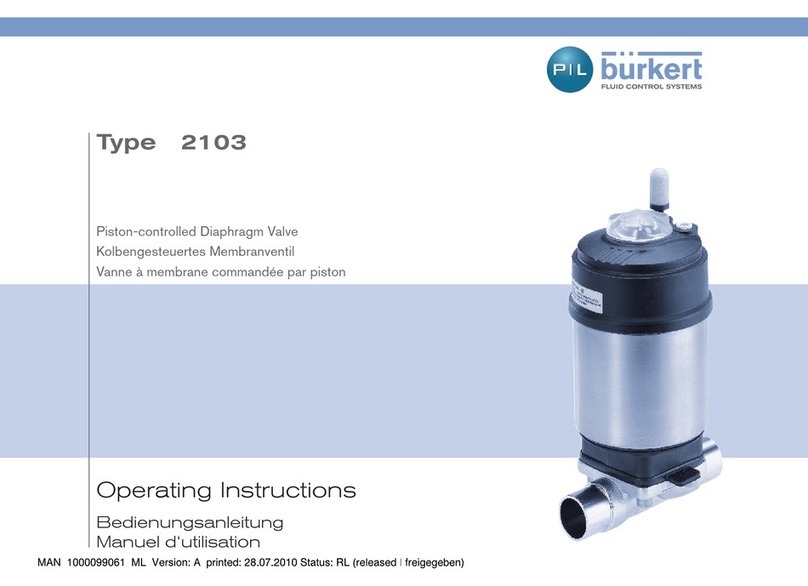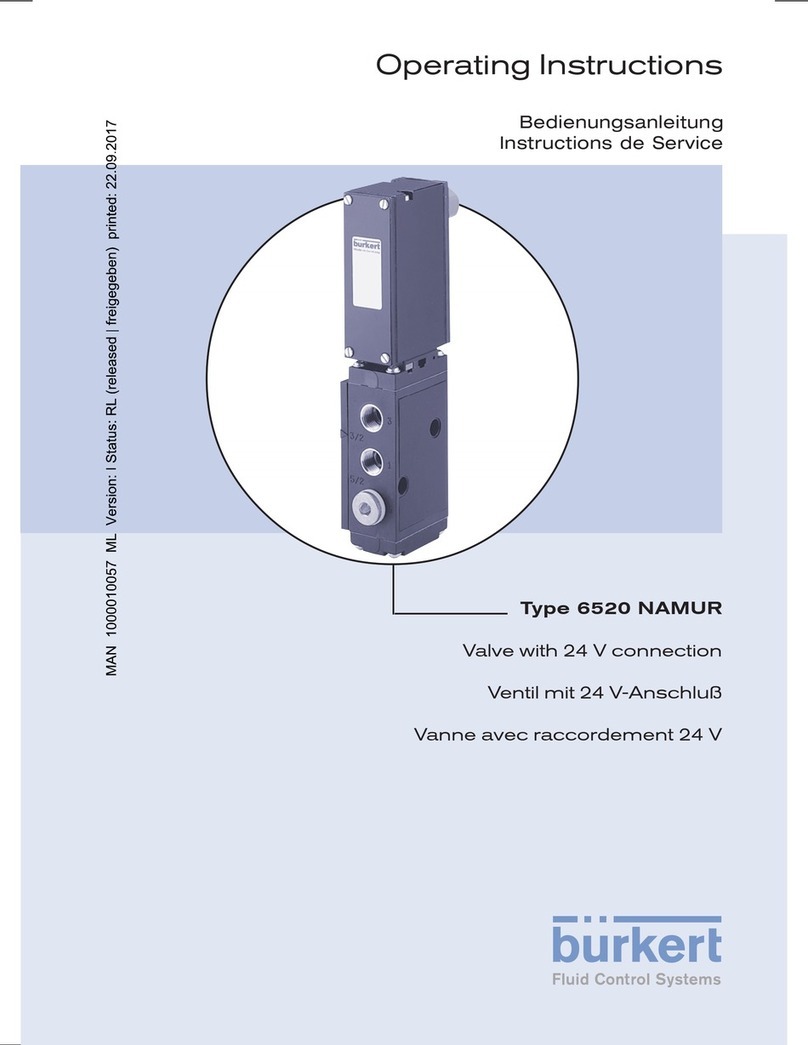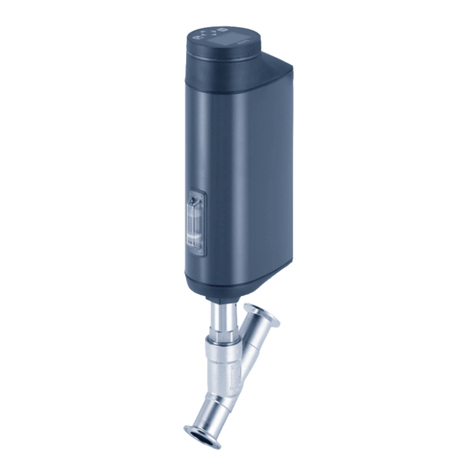
4
Danger due to low and high temperatures.
Depending on the media temperature, the device can become
extremely cold or extremely hot.
▶Keep the device away from substances sensitive to cold and
highly ammable substances and do not touch with bare
hands.
Destruction of the coil due to overheating
▶Electrically connect coil with mounted housing only.
▶In the case of alternating voltage, pay attention to movable
core.
▶Check media resistance.
General hazardous situations.
To prevent injuries, ensure that:
▶Do not feed in any aggressive or highly ammable media.
▶Do not make any internal or external changes to the device.
▶Secure the system and device against accidental activation.
▶Installation and maintenance may only be performed by autho-
rised technicians only using the appropriate tools.
▶After an interruption in the power or pneumatic supply, ensure
that the process is restarted in a dened or controlled manner.
▶Do not mechanically load housing.
▶Observe the general rules of technology.
4 TECHNICAL DATA
The following values are indicated on the type label:
•Voltage, current type, coil power
•Pressure range
•Body material (MS=brass, VA=stainless steel)
•Seal material (PTFE, NBR)
4.1 Conformity
The Type 6026 conforms to the EU directives as per the EU Declaration
of Conformity (if applicable).
4.2 Standards
The applied standards, which are used to demonstrate conformity with
EU directives, are listed in the EU type examination certicate and/or
the EU Declaration of Conformity (if applicable).
4.3 Operating conditions
Ambient temperature max. +50°C
Degree of protection with cable plug: IP65 acc. to EN 60529,
NEMA 4X
english


